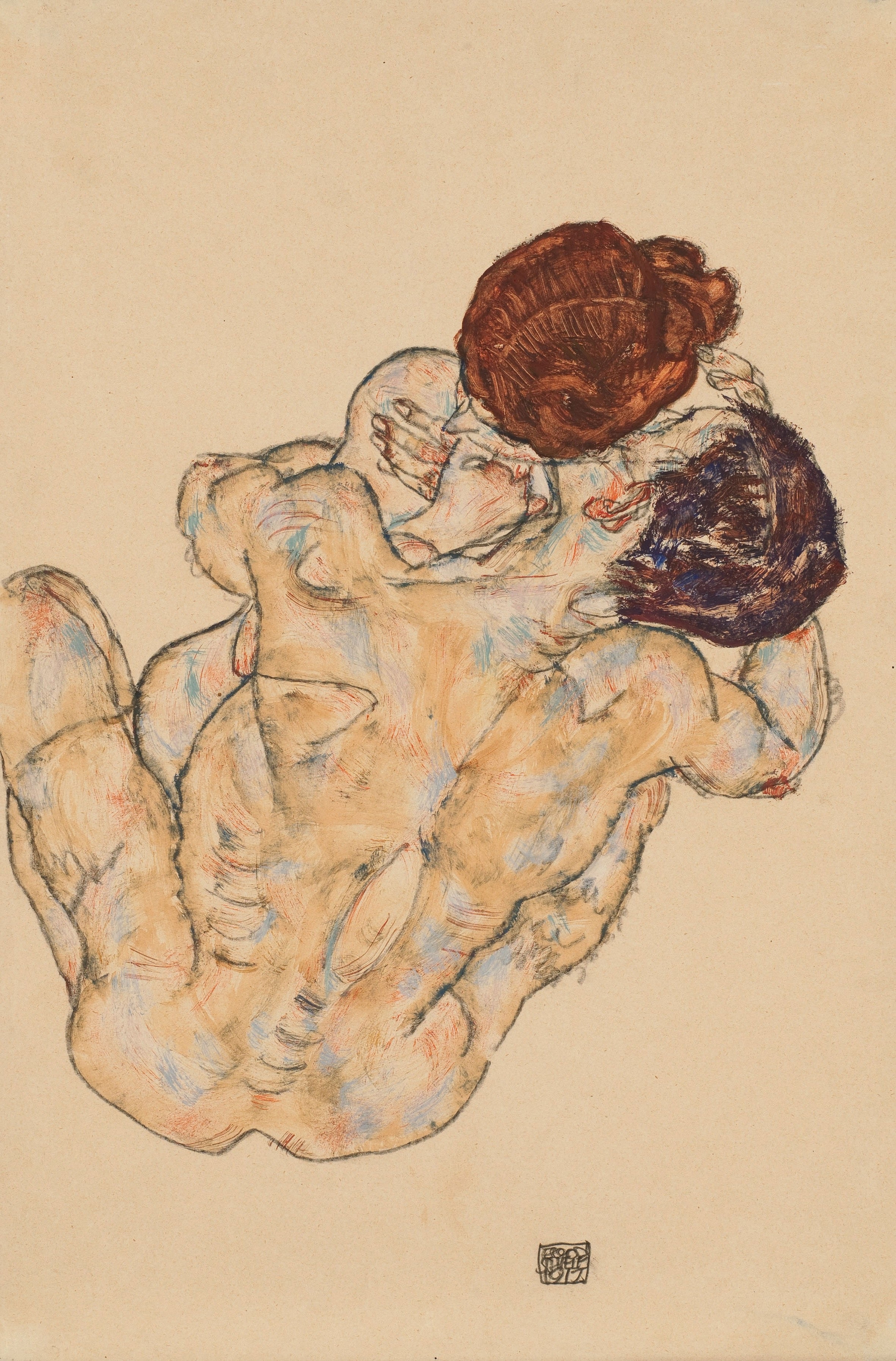You must know that my love for Egon Schiele is endless. Look at this couple sitting in a tender and passionate embrace. Who else depicted the intimacy and closeness of the lovers in such discreet and voyeuristic way at the same time?
This work is the decisive preliminary study for an oil painting with the same title. Schiele declared in this gouache his choice of the novel and unexpected way in which he would present the embracing couple in his painting: they will be seen from a most unusual point of view, with the man's intervening back to the viewer.
Here the artist depicted himself. He has shown himself nude in a major canvas for the first time since 1911. One of the causes for the cessation of nude self-portraiture was the deep trauma inflicted at Neulengbach in 1912, when the artist was jailed on morals charges. The model for the female figure, on the other hand, is not Schiele's wife Edith; she had a different figure.
When Schiele painted the gouache Umarmung and subsequently completed the oil painting, he had only about year left to him before his death due to Spanish Flu in October 1918. Drafted in 1915 into the Austrian army, he was assigned to supply units, which kept him away from the front lines and enabled him to find time to paint. In the fall of 1917 he was transferred, as he had hoped, to the Imperial War Museum in Vienna. With even more time available for studio work, he undertook his late series of figure paintings. His large contribution to the Vienna Secession in 1918, which practically amounted to a retrospective, proved to be the great triumph of his career. Klimt had died earlier that year, and now Schiele was widely considered to be his successor as Vienna's leading progressive artist. Schiele was only 28 years old.
P.S. Here you can more read about Schiele's art on the verge of eroticism and pathology.


 Egon Schiele
Egon Schiele